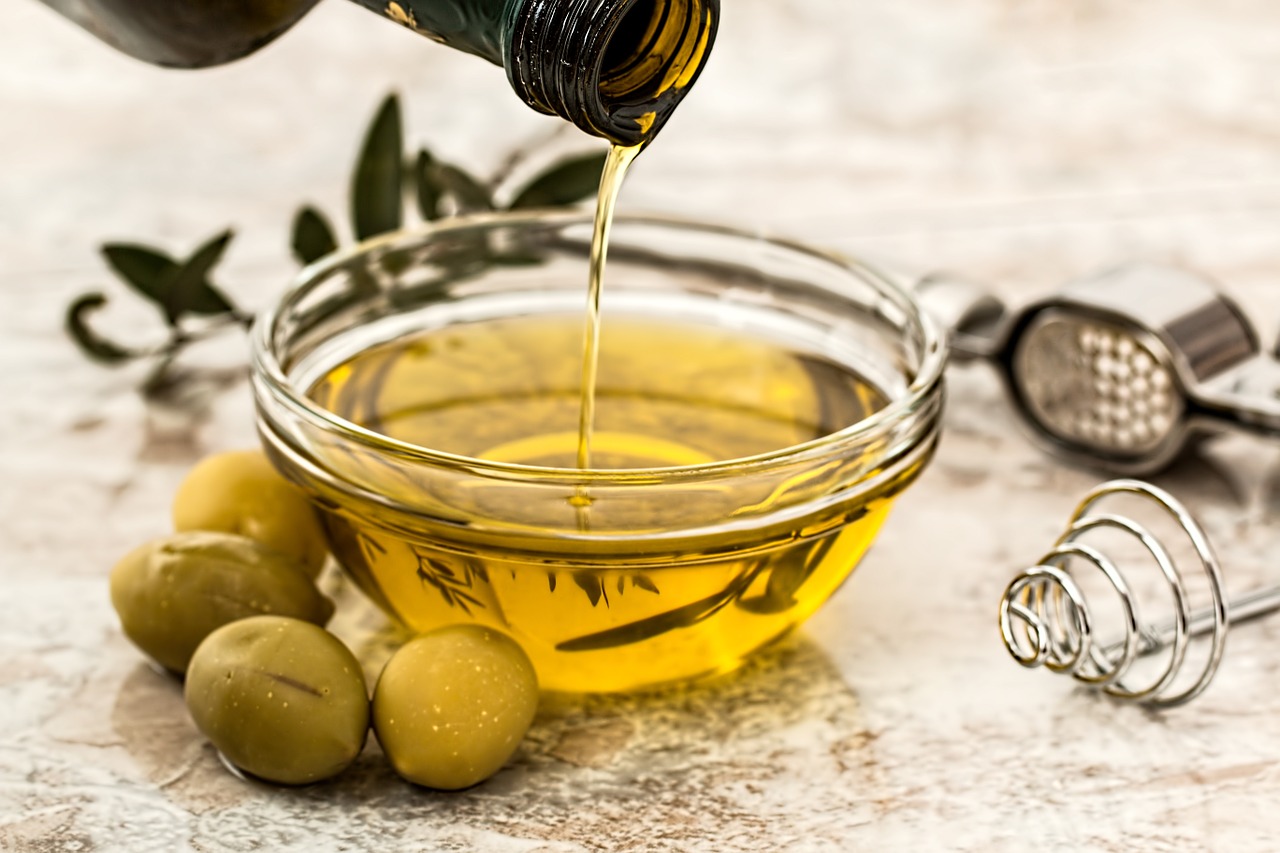Of course, this is one of the Difference Between posts that unavoidably delves into further subcategories, such as extra virgin olive oil, canola oil, peanut oil, corn oil, and so forth.
Mostly, though, I want to look at olive oil and vegetable oil, the two oils I would imagine to be the primary staples in the kitchen. As I’ve mentioned before, I typically do not differentiate between the two in my own recipes, assuming that they are virtually always interchangeable.
After doing my research today, I can honestly tell you I went out and bought some vegetable oil, and may on occasion use it instead of the olive oil that has a permanent home on my kitchen counter.
Thanks in advance to the following websites for their information on this topic: Dictionary.com, OliveOilTimes.com, 3FatChicks.com, FitDay.com (here and here), Quora.com, and Diffen.com.
To begin with, olive oil is a type of vegetable oil – this makes sense, of course, as olives are in fact a vegetable. Also falling under the vegetable oil category are soybean oil, corn oil, canola oil, and safflower oil, among others; according to 3FatChicks.com, most commercial products sold as vegetable oil are in fact soybean oil.
Olive oil is derived from olives, while vegetable oil can be obtained from the leaves, fruits, or seeds of plants. All oils have the same amount of calories, which is 120 per tablespoon.
Let us do a basic comparison of the two main oils.
Olive oil:
- Has a low smoke point, which makes it ideal for cooking over medium to high heat, such as with stir-frying or pan searing food.
- Has a distinct taste, flavored by the olives it is extracted from.
- Contains the largest amount of heart healthy “good” fats – more than any other type of oil.
- The taste, as with wine made from grapes, can vary greatly depending on where the olives were grown.
Vegetable oil:
- Has a high smoke point, which makes it ideal for cooking with extremely high temperatures.
- Often appears to be lighter and thinner than olive oils.
- Is more prone to spoilage than olive oil, and so it is of the utmost importance to store it out of the light in a tightly sealed container.
- Is rather plain and bland, which makes it ideal for cooking with when you do not want the flavor of olives (for example, with brownies); it won’t overshadow the flavor of the dish.
Quora.com believes that you should have in your kitchen both olive oil and a vegetable oil of some kind; however, while different vegetable oils have slightly different tastes, there is no need to have safflower, corn, etc on hand at all times.
Extra virgin olive oil is pretty much the best of the best, which is why it is more expensive. It is made from the first pressing of the olives – and virgin olive oil is made from the second pressing. OliveOilTimes.com maintains that, “In order for an oil to qualify as ‘extra virgin’ the oil must also pass both an official chemical test in a laboratory and a sensory evaluation by a trained tasting panel recognized by the International Olive Council. The olive oil must be found to be free from defects while exhibiting some fruitiness.”
Consequently, using EVOO for say a stir-fry is rather a waste, as most of that great flavor gets evaporated during the cooking process. Instead, use EVOO in salad dressings.
Canola oil is manufactured at high temperatures that can involve toxic chemicals like hexane. Furthermore, the high temperatures can raise the amount of trans fatty acids and saturated fats. And, it’s made from “rapeseeds” – this does not sound like the most appealing oil, I have to say.
(Side note: I once wrote an article for my old job on foods that have had their names changed to sound more appealing – dolphinfish is now mahi mahi, prunes are now dried plums, etc. Canola oil used to actually be called rapeseed oil; you can see why the name was altered.)
Peanut oil, as with vegetable oil, has a fairly neutral flavor (only a faint peanut taste) that can be used with baking; it also has a high heat capacity before it begins to smoke, so it is good to use with cooking on the stove as well.
To recap: A good rule of thumb is to use olive oil for cooking on the stove and vegetable oil for baking; extra virgin olive oil should be used in salad dressings, or in dishes where you would like the natural olive flavor to shine through.
If you would like to explore further the difference between olive oil and vegetable oil I found Diffen.com to provide the most information, much of which I did not elaborate on here.

Comments
5 responses to “Difference between: olive oil and vegetable oil”
, thank you so much for posting this! It is going to be so helpful when I research Extra Virgin Olive Oil at the grocery store! So Fab!
I think that you should do a difference between rapeseed and canola. Rapeseed is actually toxic (although canola is derived from rapeseed).
Excellent suggestion, thank you! I will put that on the list.
Mrs. Erin I thank you for this information because it helped me with my project I am researching for. This was awesome!!!
You’re most welcome, glad to hear that!